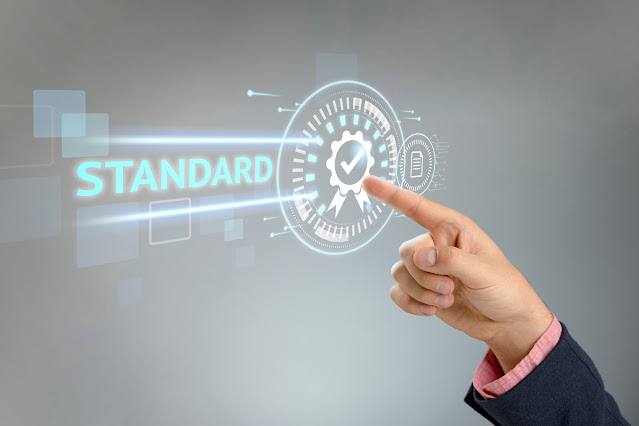Develop a Robust Quality Assurance Framework and Revolutionize Your Business
Quality assurance (QA) is the glue that keeps operations together in the business world. By ensuring that goods & services adhere to guidelines, a quality assurance framework provides client happiness and promotes corporate expansion. Moreover, a solid framework that serves as the foundation for all quality-related procedures is an essential component of QA.
This blog post will walk you
through the significance of a quality assurance framework, its components, and how to build a solid one. In
addition, it will also guide you about how quality assurance (QA) can transform
your company by promoting effectiveness and efficiency across all of your
activities.
Understanding Quality Assurance
A systematic procedure - quality assurance framework makes sure that criteria & standards are constantly met by goods & services. In addition to this, accuracy, dependability, and consistency are the cornerstones of the QA philosophy to guarantee client pleasure.
Due to this, it is crucial
for organizations since it helps prevent errors or defects in manufactured
items and problems while providing clients with solutions or services. Quality
assurance is the fence that keeps organizations producing high-quality work,
increasing consumer confidence & brand reputation.
Components of a Quality Assurance Framework
A Quality Assurance Framework comprises numerous essential parts that work together to make it effective. So, here are some crucial components of a quality assurance (QA) framework.
1. Quality Standards: These are requirements that a good or service must satisfy. Also, they help to maintain consistency and act as benchmarks for quality requirements.
2. Quality Control Processes: Processes for systematically examining & determining whether a good or service satisfies established quality standards are known as quality control processes.
3. Documentation: It's imperative to keep track of all processes, requirements, and modifications to preserve openness and an audit trail. Due to this, it is tremendously helpful for quality management.
4. Training & Development: A successful QA framework depends on team members having a solid understanding of their roles, responsibilities, and expected standards.
5. Feedback & Improvement: Consistent quality checks and customer feedback assist in pinpointing where there are still areas for improvement.
Together, these elements
comprise the QA framework. As a result, it offers a standardized method for
managing, maintaining, and enhancing quality across business processes. Also,
each component makes a distinct contribution, resulting in a harmonious synergy
that ensures the quality of the final product or service.
Steps to Develop a Robust Quality Assurance Framework
Careful preparation and a strategic approach are necessary for creating a robust Quality Assurance Framework. So, read the following how-to list to assist you along the way:
1. Identify Quality Standards: Recognize the need for quality in your sector and from your clients. But remember that this documentation should be precise to the utmost level.
2. Develop Quality Control Processes: Create procedures to examine and verify that your goods & services adhere to the established criteria by developing quality control processes.
3. Train Your Team: Give your staff the abilities & information they need to uphold the standards and effectively carry out control procedures. Thus, it's crucial to do regular training updates to maintain alignment.
4. Establish Documentation: Keep thorough records of all processes, modifications, and successful outcomes. This further promotes transparency and makes it possible for later use.
5. Implement Feedback Systems: Establish means to collect & analyze client input by using feedback systems. Then, utilize the learned insights to continuously enhance your QA framework.
Remember
that creating a quality assurance
framework is a continuous process that calls for continual monitoring,
changes, and improvements.
Benefits of Developing a Quality Assurance Framework
Implementing a robust Quality Assurance (QA) framework has many business advantages.
1. Improved Product Quality: A QA framework ensures that goods or services continually maintain high levels of quality by setting clear guidelines and thorough inspections. Thanks to their rigorous QA procedures, businesses like Toyota have gained a reputation for their commitment to grade on a global scale.
2. Increased Customer Satisfaction: Enhanced customer satisfaction is a result of high-quality products & services. Thus, the dedication of companies (such as Amazon) to quality assurance has been essential in maintaining its reputation for superior customer service.
3. Reduced Costs: A quality assurance framework can lower expenses related to reworks and returns by identifying faults early on. With tight quality assurance guidelines, tech giant Apple ensures its goods are "right the first time," potentially saving millions in recall expenses.
4. Enhanced Brand Reputation: Establish means to collect & analyze client input by using feedback systems. Utilize the learned insights to enhance your QA framework continuously.
Due to all these reasons, a
quality assurance (QA) framework can transform your company, opening the door
for more client confidence, cost savings, and brand value growth.
Wrapping it Up
This
blog post discussed the value of a Quality
Assurance Framework in a company setting, its essential elements, the steps
involved in creating a solid framework, and the advantages of such an effort. A
QA Framework enhances product quality, customer happiness, cost-effectiveness,
and brand reputation.
Uniform standards, quality control procedures, documentation, training, and feedback support it. As a result, companies are urged to create their own QA Frameworks, a project that would dramatically improve their operational effectiveness & overall success.



Comments
Post a Comment